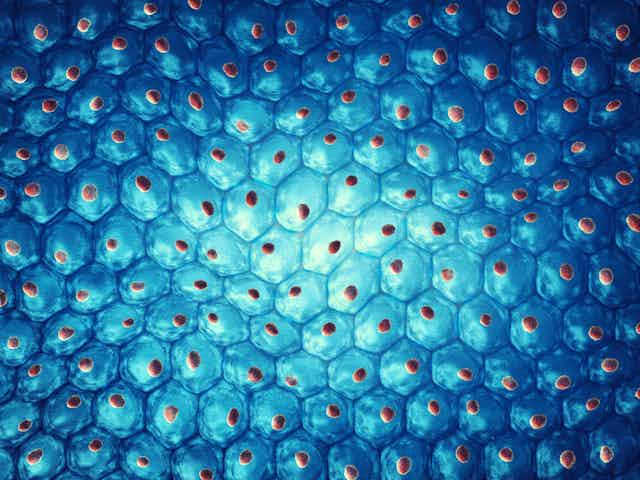It is still widely believed that the gene is the foundation of life – that its discovery has provided information about how all living beings are controlled by the genetic factors they inherit from their parents.
But scientists and philosophers are beginning to doubt the relevance of the gene for understanding biology.
Despite being central to the subject for over a century, there has never been a universally accepted, constant definition of what genes actually are. From the beginning, scientists have tried to link human characteristics to genes, but had limited success in establishing stable connections.
Instead, our understanding about genes and how they determine characteristics, including hereditary diseases, has been in continual flux. In our new book The Gene: From Genetics to Postgenomics, we look back at this changing history of genetics. Most recently, technologies have emerged which allow the sequencing of whole genomes rapidly and cheaply, and the study of complex bio-molecular systems as they evolve.
As a consequence, the function of genes is now understood to depend on systems of epigenetic inheritance and environmental signalling. Whether a gene is activated (or not) to produce a protein depends on how it is “packaged” into chromosomes, and information the organism receives from the environment.
The most important insight associated with the discovery of the gene in the early 20th century was that the order in which genes operate does not reflect the order in which the human (or plant or animal) body develops. One gene is not linked to one physical trait – many genes control many traits. Likewise, a single trait is often controlled by hundred of genes forming complex networks of interaction.
The study of genes has been complicated from the start. After years of detailed study in the mid-19th century, Austrian monk Gregor Mendel’s original laws, which were rediscovered by three botanists in 1900, and are still taught in schools and universities around the world, were not really taken as a description of reality by early geneticists.
Instead, knowledge of what happened to traits if you crossed purebred organisms simply served as a starting point for mapping genes onto chromosomes – and for studying their interactions in increasingly complicated experiments.
Using insects, bread mould, bacteria and viruses as their model organisms, scientists in the 1930s and 1940s began transferring genes, uncovering different reactions. Radiation was also used by some scientists in the early 1930s to measure their size.
With the subsequent identification of DNA as the hereditary material in 1953, it became possible to directly access and manipulate the genetic code. Even with this discovery, however, it turned out that genes are not well-defined stretches of DNA that translate directly into the structure of proteins.
Genes may consist of separate building blocks that are distributed over the genome and have different functions. They may overlap and be read in a variety of ways. Their products in turn, may be cut into pieces and then spliced together again in a variety of ways. All of these activities depend on a variety of signals – from within the cell, from other cells, or from the environment.
It is these insights into genetic mechanisms which made a single rigid definition of the gene impossible. Instead, experimental systems were developed in which genes were defined flexibly in order to track processes involved in the development and evolution of organisms.
Gene variation
What it is to be a gene varies widely, just as everything else does in biology, since genes are not so much autonomous units of life, but themselves a product of evolution.
Biologists will of course continue to talk about genes in the future. But genes will no longer be seen as the blueprint for life, even if technological and medical applications of gene technology suggest this. Instead, they are increasingly seen as only one of the many resources that organisms make use of in adapting to challenges in their environments.
In order to address medical and environmental problems, scientists will therefore need to work as part of bigger and bigger teams, with computer scientists, physicists, biochemists and evolutionary biologists. This work will be time consuming and hard to explain. They will need to show the public more clearly that sometimes research is an exercise that does not produce a clear path to the future.
Knowing more about the gene will always involve surprises. The history of the gene, once believed to be one of the biggest triumphs of 20th century science, shows how messy and unpredictable science is.

